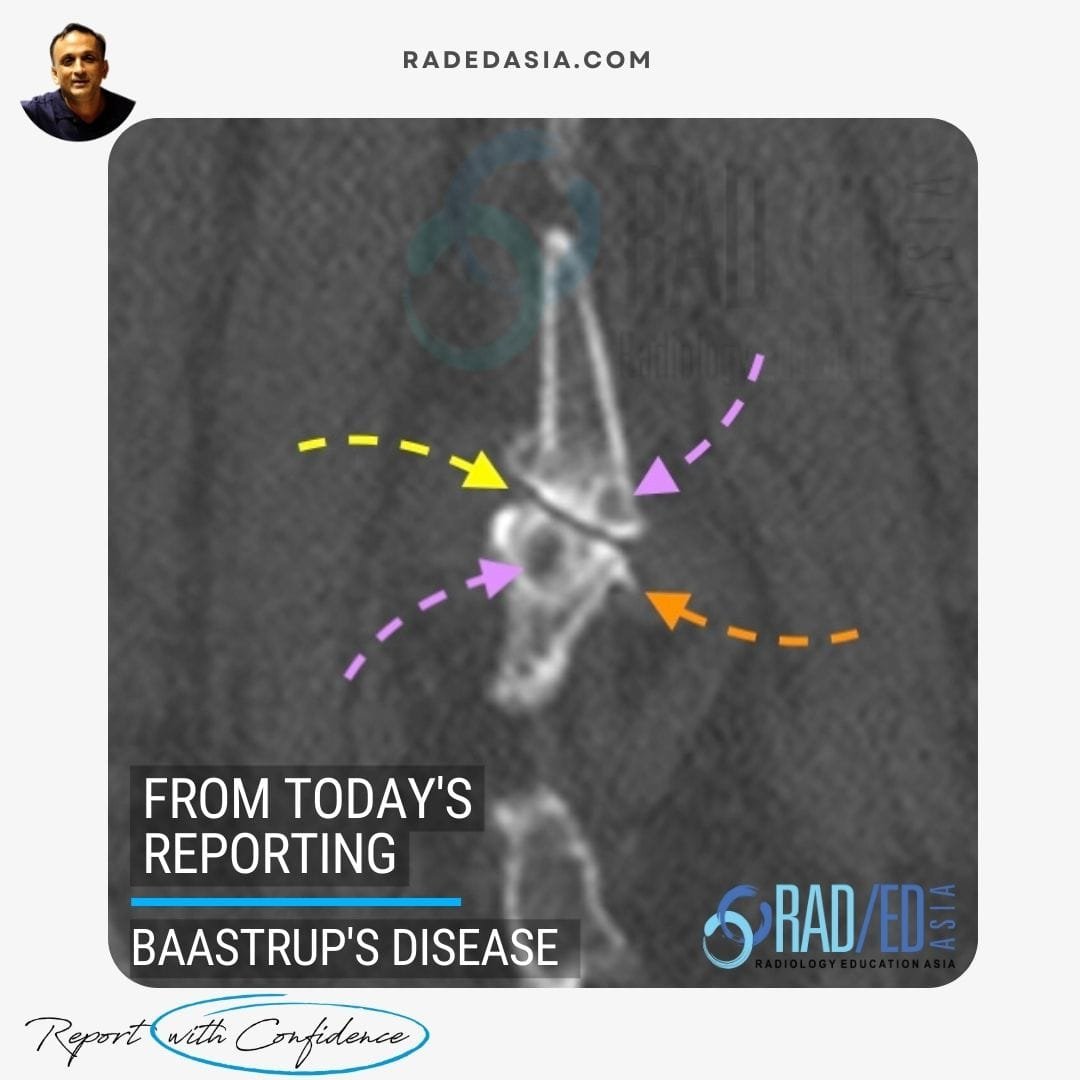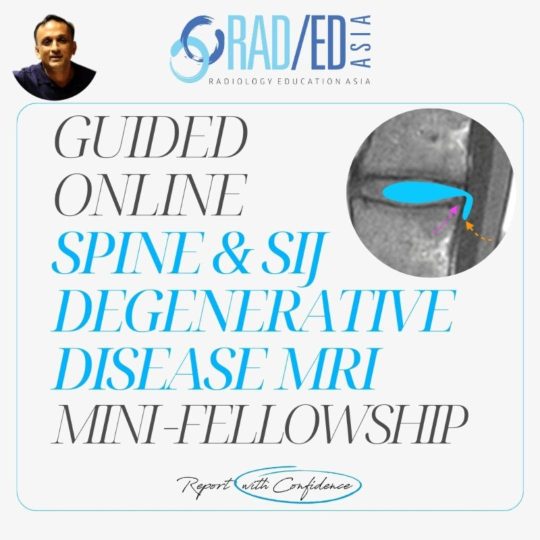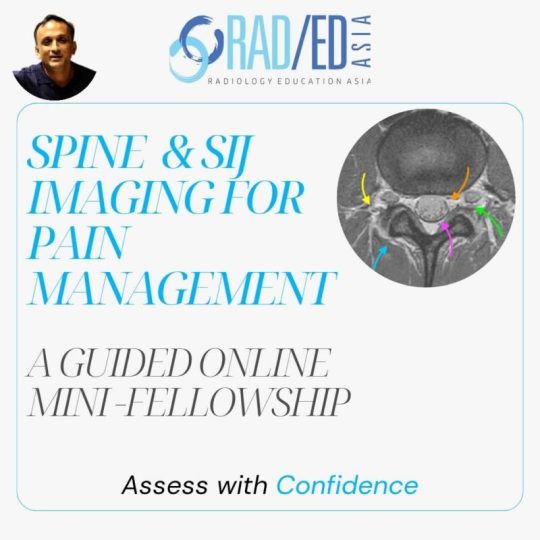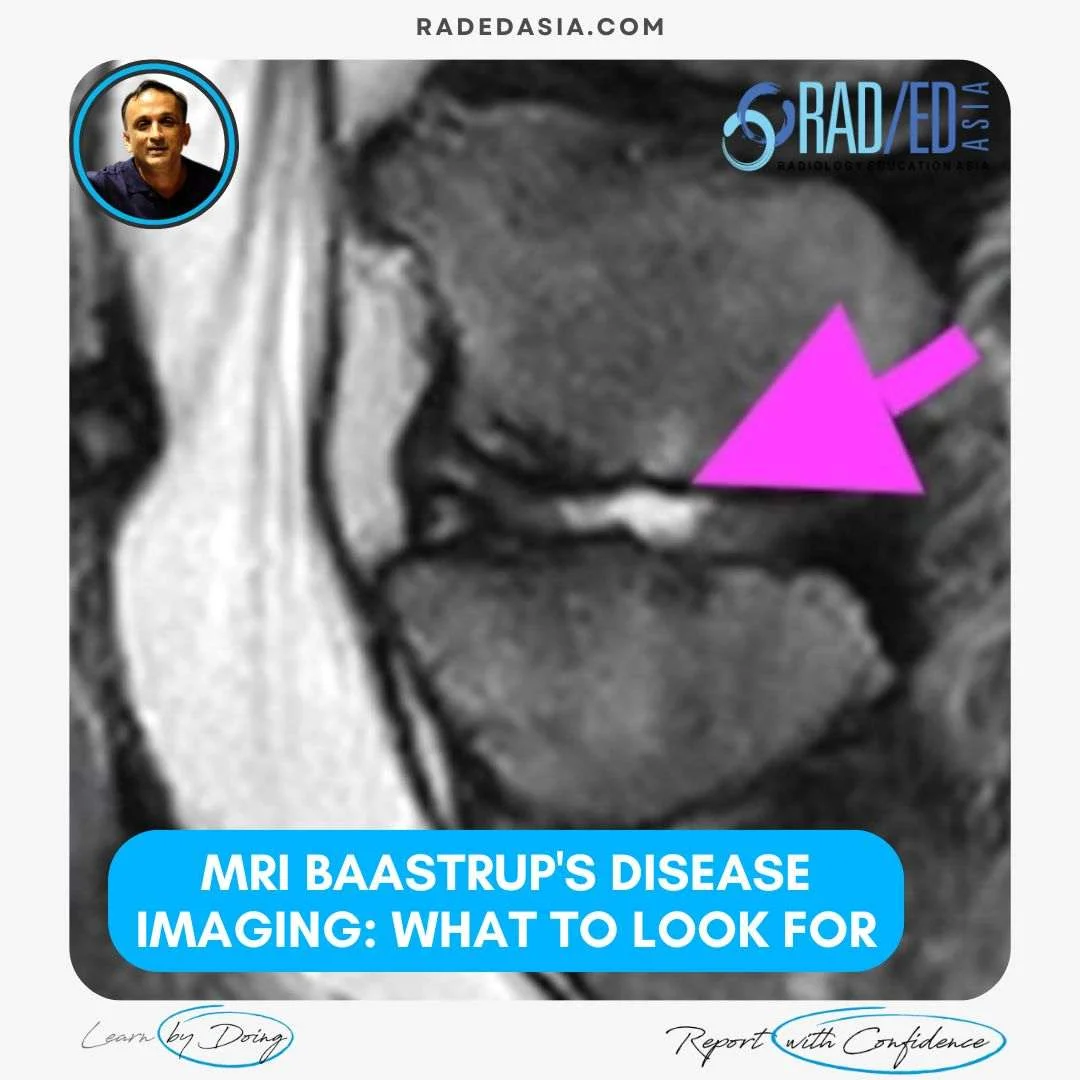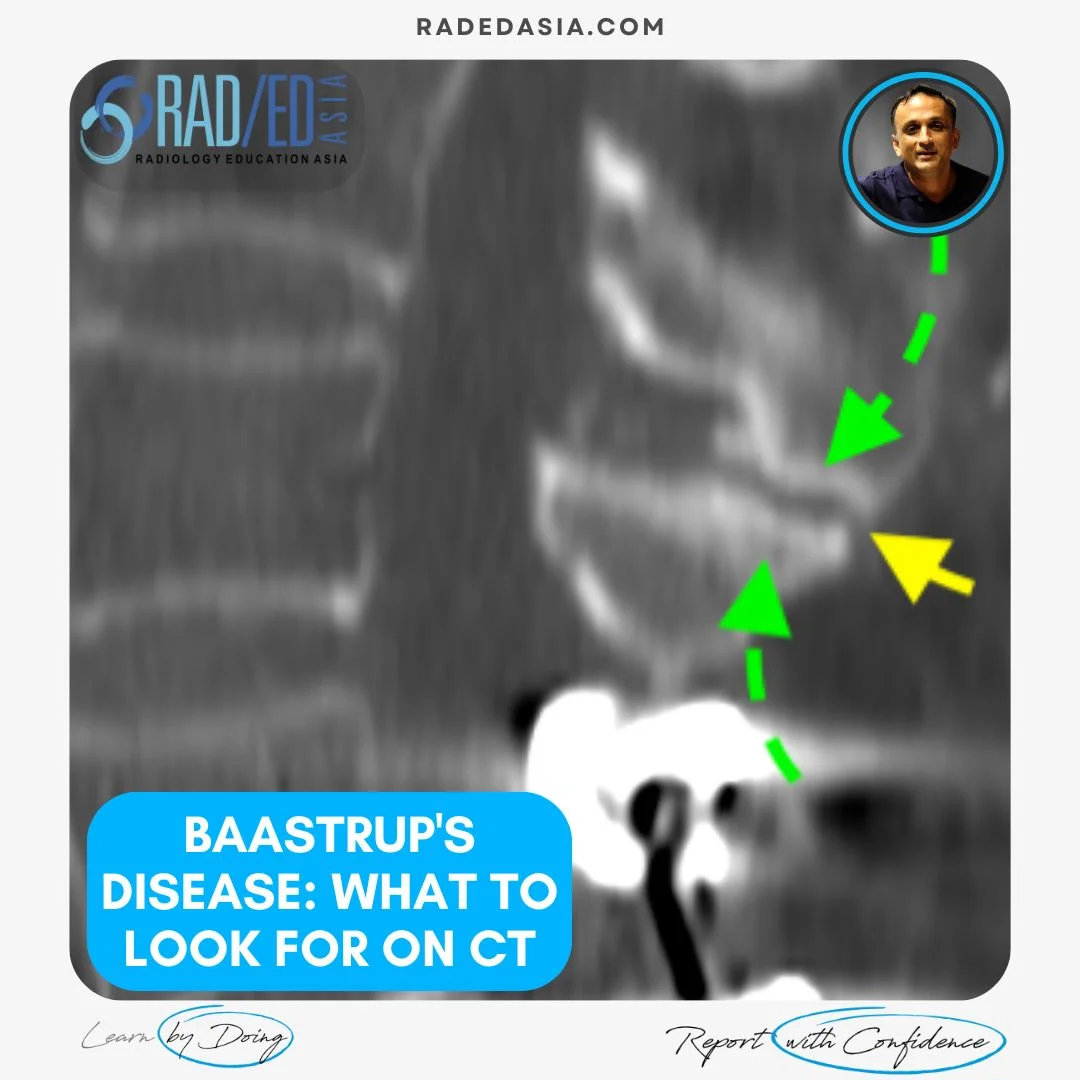
BAASTRUP DISEASE: CT FINDINGS
- Baastrup’s disease is due to abnormal contact between adjacent spinous processes) and can be a cause of back pain.
- It’s generally in an older age group and most commonly in the lower lumbar spine.
- The imaging features can be seen on both CT and MRI and in this post we look at the CT findings in Baastrup‘s disease.

- Apposition of spinous processes: Narrowing of the interspinous distance (Yellow arrow) of adjacent spinous processes that appear very close together or touch (also known as "kissing spines").
- Broadening of the spinous processes: The apposing surfaces of the spinous processes broaden and flatten (Green arrows).

Learn more SPINE & SIJ MRI and CT Imaging in our guided online Mini-Fellowships.
Click on the image below for more information.
For all our other current MSK MRI & Spine MRI
Online Guided Mini Fellowships.
Click on the image below for more information.
- Join our WhatsApp RadEdAsia community for regular educational posts at this link: https://bit.ly/radedasiacommunity
- Get our weekly email with all our educational posts: https://bit.ly/whathappendthisweek



